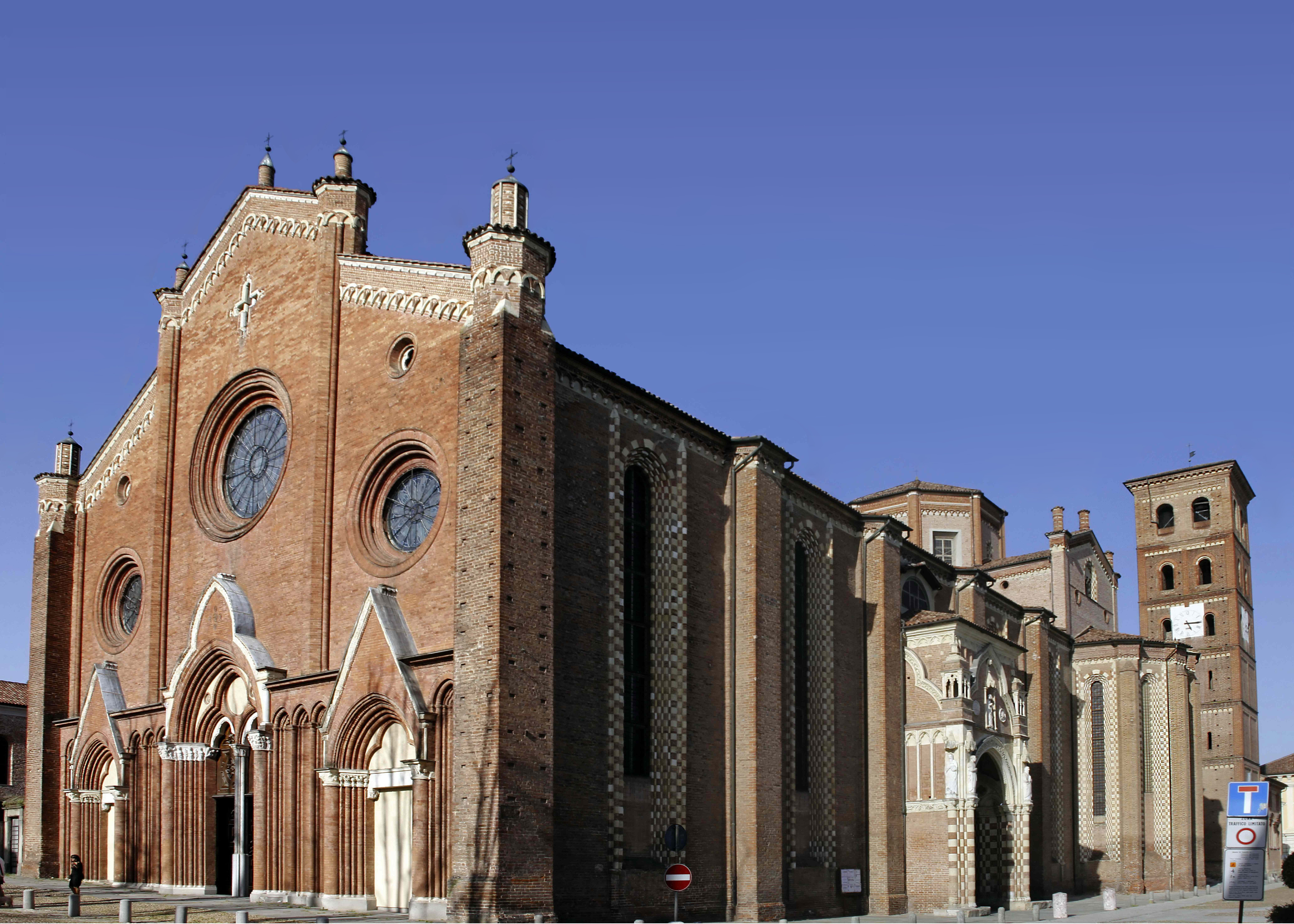Asti Cathedral on:
[Wikipedia]
[Google]
[Amazon]
 Asti Cathedral (), the episcopal seat of the
Asti Cathedral (), the episcopal seat of the
 Asti Cathedral (), the episcopal seat of the
Asti Cathedral (), the episcopal seat of the Diocese of Asti
The Diocese of Asti () is a Latin diocese of the Catholic Church in Piedmont, northern Italy, centered in the city of Asti. It has been a suffragan of the Archdiocese of Turin since 1515.Roman Catholic
The Catholic Church (), also known as the Roman Catholic Church, is the largest Christian church, with 1.27 to 1.41 billion baptized Catholics worldwide as of 2025. It is among the world's oldest and largest international institut ...
cathedral
A cathedral is a church (building), church that contains the of a bishop, thus serving as the central church of a diocese, Annual conferences within Methodism, conference, or episcopate. Churches with the function of "cathedral" are usually s ...
in Asti
Asti ( , ; ; ) is a ''comune'' (municipality) of 74,348 inhabitants (1–1–2021) located in the Italy, Italian region of Piedmont, about east of Turin, in the plain of the Tanaro, Tanaro River. It is the capital of the province of Asti and ...
, Piedmont
Piedmont ( ; ; ) is one of the 20 regions of Italy, located in the northwest Italy, Northwest of the country. It borders the Liguria region to the south, the Lombardy and Emilia-Romagna regions to the east, and the Aosta Valley region to the ...
, Italy. It is dedicated to the Assumption of the Blessed Virgin Mary
The Assumption of Mary is one of the four Marian dogmas of the Catholic Church. Pope Pius XII defined it on 1 November 1950 in his apostolic constitution as follows:
It leaves open the question of whether Mary died or whether she was ra ...
and to Saint Gotthard, and at 82m long and 24m in height and width, is one of the largest churches in Piedmont, the highest expression of Gothic architecture
Gothic architecture is an architectural style that was prevalent in Europe from the late 12th to the 16th century, during the High Middle Ages, High and Late Middle Ages, surviving into the 17th and 18th centuries in some areas. It evolved f ...
of the region, and among the best examples of Lombard Romanesque
The term Lombard refers to people or things related to Lombardy, a region in northern Italy.
History and culture
* Lombards, a Germanic tribe
* Lombardic language, the Germanic language spoken by the Lombards
* Lombards of Sicily, a linguisti ...
appreciable in northern Italy.
History
It is likely that the first construction of the cathedral started around the fifth or sixth century, and tradition has it that it replaced series of earlier buildings including a primitive church built on the crypt of the martyred saint,Secundus of Asti
Secundus of Asti () (died c. 119) is venerated as a martyr and saint. His feast day is generally celebrated on 29 March. Until the 15th century it was celebrated at Asti on 30 March, but it is now celebrated there on the first Tuesday in May. ...
. Among other of these buildings still apparent is St. John's Church, used today for baptisms. Around 1070, the building collapsed, partly as a result of a fire that set by Adelaide of Susa
Adelaide of Susa (also ''Adelheid'', ''Adelais'', or ''Adeline''; – 19 December 1091) was the countess of part of the March of Ivrea and the Marchioness of Turin in Northwestern Italy from 1034 to her death. She was the last of the Arduin ...
in her dispute with the bishops. In 1095 the rebuilt Cathedral was consecrated by Pope Urban II
Pope Urban II (; – 29 July 1099), otherwise known as Odo of Châtillon or Otho de Lagery, was the head of the Catholic Church and ruler of the Papal States from 12 March 1088 to his death. He is best known for convening the Council of Clermon ...
to preach the First Crusade
The First Crusade (1096–1099) was the first of a series of religious wars, or Crusades, initiated, supported and at times directed by the Latin Church in the Middle Ages. The objective was the recovery of the Holy Land from Muslim conquest ...
.
The bell tower was rebuilt starting in 1266 by the magister Murator Jacopo Ghigo consisting of seven floors, plus an octagonal spire, and it is visible in '' Theatrum Statuum Sabaudiae'', a tome which was the result of an ambitious project undertaken by Duke Charles Emmanuel II in the 1660s consisting of two large volumes completed and printed 1682 in Amsterdam, by publisher and cartographer Joan Blaeu
Joan Blaeu (; 23 September 1596 – 21 December 1673), also called Johannes Blaeu, was a Dutch cartographer and the official cartographer of the Dutch East India Company. Blaeu is most notable for his map published in 1648, which was the fir ...
. It is a collection of images of places and buildings under the dominion of Savoy in the late seventeenth century which at the time included Savoie, Nice, Piedmont, Aosta Valley, and Liguria.
See also
*Catholic Church in Italy
The Italian Catholic Church, or Catholic Church in Italy, is part of the worldwide Catholic Church in full communion, communion with the Pope in Rome, under the Conference of Italian Bishops. The pope serves also as Primate of Italy and Bishop ...
References
Roman Catholic cathedrals in Italy Cathedrals in Piedmont Churches in the province of Asti Buildings and structures in Asti {{Italy-RC-cathedral-stub